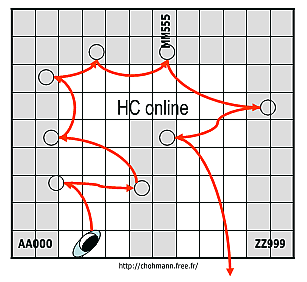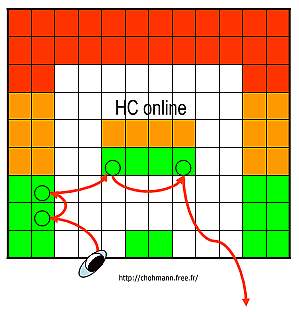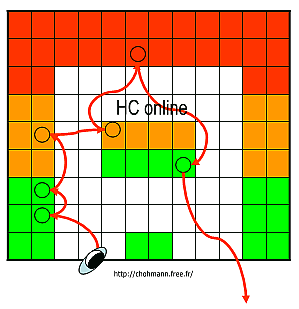ABC Method
|

|
Last update: January 2014
| 
ABC Method(Reminder)The ABC method is based on the principle of Pareto Charts, and defines three classes A, B and C:
Application example: Inventory and picking management
This post has been moved to my blogLet's consider a warehouse where operators prepare kits or orders from parts or products stored on shelves. The shelves are traditionnally set up in a U shaped layout, providing a logical path for picking. Let's assume the part numbers are placed on the shelves in an alphanumerical order, the first being AA000 and the last ZZ999, to simplify picking. Picking lists are consistently printed in alphanumerical order, the operator walks the U and picks up the articles (part numbers) accordingly to his list. This system is pretty simple, but not yet very efficient. For each preparation of few articles, he'll has to walk the whole U. If the stored items are big volumes or if the U is widespread, the time spent in walking and transportation becomes significant. Remember time passed to move or transport material or parts is considered non value operation, a waste in the lean thinking way. ABC Analysis
Applying the rules of ABC analysis to our inventory, and focusing on the "stock turns" index or "frequency of picking" per reference number, we'll see a A class (probably aroud 20% of articles) accumulating 80% of all pickings. The A class items being so often picked, it is only common sens to place them the closest to entry-exit stoc(green zone) in order to reduce reaching distance hence time passed during the picking. Stored quantities must be consistent with picked quantities, therefore and despite the fact these items reprensent only a limited share of the whole (numbers of references), the A class deserves duplicate storage space on the shelves. Statistically in fewer demand, B class items are placed behind A class (orange zone) and C class items (the least wanted) stored even further (red zone). 
Now, thanks to new layout organization, picking time and distances are globally reduced. In most cases, the journey in the U will be restricted to the front (green zone). In few cases only, statistically less frequent, the operator will have to walk the whole U. Other benefitsOn top of the gains by time and distance reduction, we can imagine the light of our green zone should be on constantly, but orange and red zones could be set up with sensors or switches so to light them up only when somebody is in. In the same way, for the comfort of workers, heating or air conditioning isn't necessary in zones where go seldomly. These are opportunities to reduce energy costs.
|
This example
is suitable for warehouse, inventories in a cloth or shoe shop... | |||||||||||||||||||||||||
This page was brought to you by ©hris HOHMANN - http://chohmann.free.fr/
